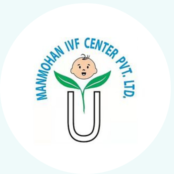IVF Process
According to the Human Fertilization and Embryology Authority in the U.K., one IVF treatment cycle can take between 3–6 weeks. However, a person may require more than one cycle depending on their risk factors and the success rate of the treatment.
Techniques may differ depending on the clinic. However, IVF usually involves the following steps:
- Step-1
- Step-2
- Step-3
- Step-4
- Step-5
1. OVARIRAN STIMULATION
Ovarian stimulation is the first stage of IVF procedure. The goal is to artificially
inject hormones for super ovulation to obtain as many eggs (oocytes) as possible.
2. EGG RETRIVAL
Egg Retrieval is the second stage of IVF procedure. In this stage IVF specialized
will passed a needle through the top of vagina under ultrasound guidance to get to
the follicles in ovaries and aspirate fluids containing eggs.
3. FERTILISATION OF EGGS
Fertilization of eggs takes place by using two methods:
In conventional IVF after egg retrieval, egg and calculated number of sperm are
kept together for 18 hrs. After that fertilization check is done where two pronuclei
is observed.
Whereas in case of Intracytoplasmic sperm injection(ICSI) one sperm cell is
injected directly into one oocyte and fertilization check is done same as
conventional IVF.
4. EMBRYO CULURE
After fertilization embryos are cultured for 3 or 5 days according to the planning of
transfer of embryo at Day 3 stage or Day 5 stage.
5. EMBRYO TRANSFER
This is final and most important stage of IVF procedure. The embryo transfer
itself is a short procedure, often lasting between 15 and 30 minutes. IVF
specialized will pass a catheter through the cervix and into the womb. From there,
the embryos are passed into the womb.
After two weeks of transfer, β HCG level is detected using blood sample to
determine whether implantation took place or not.
